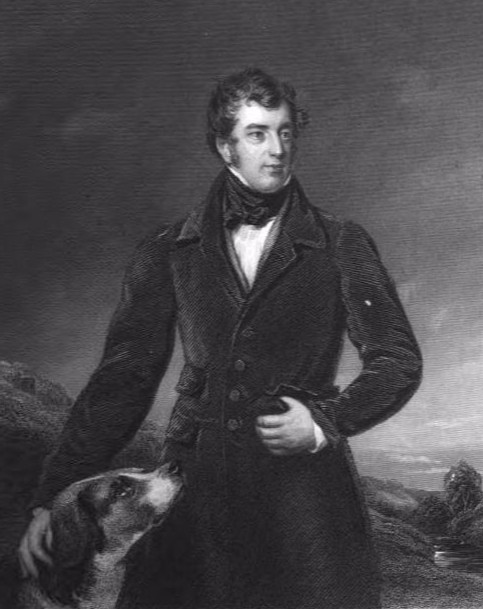|
Small White Pig
The Small White or Small Yorkshire was a British breed of domestic pig, common during the nineteenth century. It is now extinct, but its characteristics were used in producing the Middle White and other breeds. History and characteristics The Small White was developed in the early nineteenth century by cross-breeding the traditional Old Yorkshire, a large white pig, with imported Chinese pigs.The Middle White , British Pig Association, accessed 23 February 2010 This created a small animal with a pure white ground colour, pricked ears, the short, wide head of the Chinese breeds and their characteristic short upturned snout.Spencer, S. ''Pigs: Breeds and Management'', Vinton, 1897, p.24 In common with the ... [...More Info...] [...Related Items...] OR: [Wikipedia] [Google] [Baidu] |
List Of Pig Breeds
There are hundreds of breeds of the domestic pig ''(Sus scrofa domesticus)''. List with classification and standards See also * List of sheep breeds * List of goat breeds * List of cattle breeds * Lists of domestic animal breeds References * * {{Breed Pig breeds, List Lists of breeds, Pig ... [...More Info...] [...Related Items...] OR: [Wikipedia] [Google] [Baidu] |
Domestic Pig
The pig (''Sus domesticus''), also called swine (: swine) or hog, is an omnivorous, domesticated, even-toed, hoofed mammal. It is named the domestic pig when distinguishing it from other members of the genus '' Sus''. Some authorities consider it a subspecies of ''Sus scrofa'' (the wild boar or Eurasian boar); other authorities consider it a distinct species. Pigs were domesticated in the Neolithic, both in China and in the Near East (around the Tigris Basin). When domesticated pigs arrived in Europe, they extensively interbred with wild boar but retained their domesticated features. Pigs are farmed primarily for meat, called pork. The animal's skin or hide is used for leather. China is the world's largest pork producer, followed by the European Union and then the United States. Around 1.5 billion pigs are raised each year, producing some 120 million tonnes of meat, often cured as bacon. Some are kept as pets. Pigs have featured in human culture since Neolithic time ... [...More Info...] [...Related Items...] OR: [Wikipedia] [Google] [Baidu] |
Extinct
Extinction is the termination of an organism by the death of its Endling, last member. A taxon may become Functional extinction, functionally extinct before the death of its last member if it loses the capacity to Reproduction, reproduce and recover. As a species' potential Range (biology), range may be very large, determining this moment is difficult, and is usually done retrospectively. This difficulty leads to phenomena such as Lazarus taxon, Lazarus taxa, where a species presumed extinct abruptly "reappears" (typically in the Fossil, fossil record) after a period of apparent absence. Over five billion species are estimated to have died out. It is estimated that there are currently around 8.7 million species of eukaryotes globally, possibly many times more if microorganisms are included. Notable extinct animal species include Dinosaur, non-avian dinosaurs, Machairodontinae, saber-toothed cats, and mammoths. Through evolution, species arise through the process of specia ... [...More Info...] [...Related Items...] OR: [Wikipedia] [Google] [Baidu] |
Middle White
The Middle White is a British breed of domestic pig. It originated in Yorkshire, and derived from the Large White and the now-extinct Small White. It was recognised in 1852, and the first herd-book was published in 1884. It is a porker, reared for fresh pork (rather than for bacon or for lard like some other breeds of pig), and is characterised by a short and sharplyupturned snout. After the Second World War it came close to extinction; although numbers have recovered somewhat, it is listed by the Rare Breeds Survival Trust as "priority" – the highest level of risk. History In the early eighteenth century the traditional Yorkshire pigs of the county of that name were to a greater or lesser extent cross-bred with other stock, mostly of Asian origin; the effects of this were seen mainly in the shape of the face and in the size of the resulting animals. By about 1850 the Small White – a small white pig with a heavily foreshortened snout – was popular as a show bre ... [...More Info...] [...Related Items...] OR: [Wikipedia] [Google] [Baidu] |
British Pig Association
The National Pig Association is the trade association A trade association, also known as an industry trade group, business association, sector association or industry body, is an organization founded and funded by businesses that operate in a specific Industry (economics), industry. Through collabor ... for the pig industry in the UK. History It was formed in October 1999 from the British Pig Association commercial committee and the NFU pig committee. British pig industry The British pig industry has faced economic hardship. In 2007 the NPA calculated that British farmers lose £26 for every pig they produce, when there was a large increase in the cost of animal feed. This led to the BPA contributing to a campaign song entitled ''Stand By Your Ham'', a remake of the country music song '' Stand by Your Man'', under the banner of ''Pigs are worth it''. This was at a time when there was estimated to be 1,500 pig farmers in the UK who received around £1.10 per kilogram of pork. ... [...More Info...] [...Related Items...] OR: [Wikipedia] [Google] [Baidu] |
Henry Reynolds-Moreton, 2nd Earl Of Ducie
Henry George Francis Reynolds-Moreton, 2nd Earl of Ducie (8 May 1802 – 2 June 1853), styled the Hon. Henry Reynolds-Moreton from 1808 to 1837 and the Lord Moreton from 1837 to 1840, was a British Whig politician, agriculturalist and cattle breeder. Early life Ducie was born on 8 May 1802, the son of Thomas Reynolds-Moreton, 1st Earl of Ducie, and his wife Lady Frances Herbert, daughter of Henry Herbert, 1st Earl of Carnarvon. He was educated at Eton. Lord Ducie married the Hon. Elizabeth, daughter of John Dutton, 2nd Baron Sherborne, on 29 June 1826. They had eleven sons and four daughters. Career Lord Moreton entered Parliament for Gloucestershire in 1831, a seat he held until the following year when the constituency was abolished, and then represented Gloucestershire East until 1835. After entering the House of Lords on the death of his father in 1840 he served in the Whig administration of Lord Russell as a Lord-in-waiting (government whip in the House of Lords) fr ... [...More Info...] [...Related Items...] OR: [Wikipedia] [Google] [Baidu] |
Pig Show
Pig shows are an event where pigs are evaluated for their quality. They are evaluated on a multitude of things which include composition (muscle vs. fat), capaciousness, and skeletal integrity along with general appearance and conformation to their respective breed. Owners buy or raise their pigs from small piglets and spend time learning what the pig needs to make it the best possible. You can switch up compositions of a pig by simply changing what and how you feed them. Other names for a pig show include swine show and hog show. A pig show is frequently part of a larger agricultural show. During the agricultural show pigs may be shown, as well as cattle, goats, and sheep. History Pig shows began on farms where the owner and other pig farmers would gather to decide which pig had the best qualities for breeding. These would not be named pig shows, but ultimately they were making a decision on which animals to retain to breed. Eventually, breeders would meet at a specified loca ... [...More Info...] [...Related Items...] OR: [Wikipedia] [Google] [Baidu] |
Cumberland Pig
The Cumberland was a breed of domestic pig that originated in the Northern England, North of England; it was used to produce local delicacies like the Cumberland sausage and Cumberland ham. The breed became extinct in 1960, after changes in farming methods and a demand for less fatty meat led to it falling out of favour. History and characteristics The Cumberland was a very old breed that likely developed over several hundred years in Cumberland and Westmorland, and was closely related to the Old Yorkshire white pig. It was a heavy-set white animal with pendulous ears, and had a tough constitution enabling it to withstand the poor weather of Northern England. The breed grew quickly to above-average size, with a high fat content. During the 19th century, many efforts were made to 'improve' pig breeds, and the Cumberland was often crossed with the Yorkshire white breeds. These eventually developed into the Large White (pig), Large White, Small White (pig), Small White, and Middl ... [...More Info...] [...Related Items...] OR: [Wikipedia] [Google] [Baidu] |
Large White (pig)
The Large White is a British breed of domestic pig. It derives from the old Large Yorkshire breed from the county of Yorkshire, in northern England. History The Large White derives from the old Large Yorkshire breed, a long-legged and heavy-boned pig from the county of Yorkshire, in northern England. In the nineteenth century this was crossed with pigs imported from China, giving rise to three distinct types or breeds: the Small White showed the greatest Asian influence, small and fat with a markedly foreshortened snout; the Middle White also showed some foreshortening of the face; the Large White was the least obviously influenced by the Chinese admixture. It may also have been influenced by the Cumberland and Leicestershire breeds. A pair of pigs of Large White type were shown at the Royal Agricultural Show in Windsor in 1851. The breed was recognised in 1868, and a herd-book was started in 1884. The Large White has been exported to many countries of the world. The ... [...More Info...] [...Related Items...] OR: [Wikipedia] [Google] [Baidu] |
Yorkshire
Yorkshire ( ) is an area of Northern England which was History of Yorkshire, historically a county. Despite no longer being used for administration, Yorkshire retains a strong regional identity. The county was named after its county town, the city of York. The south-west of Yorkshire is densely populated, and includes the cities of Leeds, Sheffield, Bradford, Doncaster and Wakefield. The north and east of the county are more sparsely populated, however the north-east includes the southern part of the Teesside conurbation, and the port city of Kingston upon Hull is located in the south-east. York is located near the centre of the county. Yorkshire has a Yorkshire Coast, coastline to the North Sea to the east. The North York Moors occupy the north-east of the county, and the centre contains the Vale of Mowbray in the north and the Vale of York in the south. The west contains part of the Pennines, which form the Yorkshire Dales in the north-west. The county was historically borde ... [...More Info...] [...Related Items...] OR: [Wikipedia] [Google] [Baidu] |
Keighley
Keighley ( ) is a market town and a civil parishes in England, civil parish in the City of Bradford Borough of West Yorkshire, England. It is the second-largest settlement in the borough, after Bradford. Keighley is north-west of Bradford, north-west of Bingley, north of Halifax, West Yorkshire, Halifax and south-east of Skipton. It is governed by Keighley Town Council and Bradford City Council. Keighley is in West Yorkshire, close to the borders of North Yorkshire and Lancashire. Historic counties of England, Historically in the West Riding of Yorkshire, it lies between Airedale and Keighley Moors. At the 2011 census, Keighley had a population of 56,348. History Toponymy The name Keighley, which has gone through many changes of spelling throughout its history, means "Cyhha's farm or clearing", and was mentioned in the Domesday Book of 1086: "In Cichhelai, Ulchel, and Thole, and Ravensuar, and William had six carucates to be taxed." Town charter Henry de Keighley, a ... [...More Info...] [...Related Items...] OR: [Wikipedia] [Google] [Baidu] |





